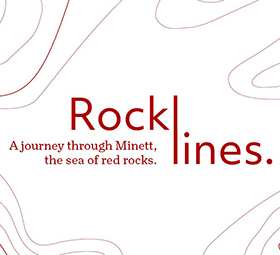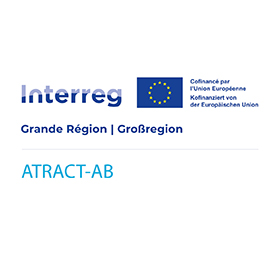 You Are The Biosphere
You Are The Biosphere


From an idea to a prestigious label
Five years between the idea and the creation of this biosphere reserve

Five years passed between the 4th World Congress of the World Network of Biosphere Reserves of the UNESCO MAB Programme (Man and the Biosphere), where the idea – totally utopian at the time – of creating a biosphere reserve in Luxembourg was born, and its creation.
2016: The idea of a Luxembourg biosphere reserve is born
Very quickly, however, the idea found its way into the minds – and hearts, because without them such a project would not work – of a small group of enthusiasts, which gradually grew. Lively discussions, enriching encounters, countless meetings of working groups, public consultations, exchanges with children and young people, and interviews with the various stakeholders finally led the eleven municipalities of the Syndicat PRO-SUD to apply for UNESCO’s Man and the Biosphere programme.
These five years of work and meetings would not have been possible without the unfailing support of the national and local authorities. From the outset, the idea was effectively backed by the Ministries of Culture, the Environment, Spatial Planning and Tourism, which put the skills and dedication of their staff at the service of the bid. The project really took off when the inter-municipal Syndicat PRO-SUD unanimously decided to lead the bid to create Luxembourg’s first biosphere reserve on the territory of its eleven member municipalities.
The commitment and interest shown by the authorities and inhabitants of the concerned municipalities demonstrated the importance and attractiveness of the MAB programme, the necessity and importance of which we are constantly reminded of by dramatic climatic and ecological developments. In the run-up to the bid, the various working groups – largely made up of volunteers – created a dynamic of mobilisation throughout the region.
2017 & 2018: Working groups put the idea into practice
From March to December 2017, a small working group consisting of two representatives of the UNESCO Commission (Catherine Decker and Simone Beck), cultural consultant Robert Garcia and Jean Goedert held regular informal discussions on the various aspects of the programme and its potential for the Southern Region. It soon became clear that the MAB group needed to be expanded to include specialists in fields as diverse as geology, spatial planning, nature reserve management, biodiversity, sociology, history, tourism and culture. From the outset, a close and fruitful collaboration was established with the Syndicat PRO-SUD and its staff, without whom the coordination of the bid and the implementation of the project would not have been possible.
As the work progressed, more specific and targeted working groups were set up:
- The “Zoning” working group, chaired by Myriam Bentz and assisted by Ann-Kathrin Wirth (Department of Spatial Planning), defined and delimited the various zones required by UNESCO for each biosphere reserve. These are:
- – Core zones – fully protected
- – Buffer zones – dedicated to reducing the impact of human activities on the core zones, and
- – Transition zones – consisting of the remaining areas where human activities take place.
- The « Eise Stol » working group, chaired by Robert Garcia, has analysed the infrastructure and industrial heritage in the eleven PRO-SUD municipalities, with the aim of preventing their disappearance for building purposes and developing a coherent concept for their use. The group also worked on the revival of the “National Centre of Industrial Culture”, a project launched in 2004 but which fell victim to the 2008 financial crisis. In order to organise their work more coherently, the members of this working group set up the non-profit association “Industriekultur – Centre national de la culture industrielle” in July 2019, under an agreement with the Ministry of Culture, which entrusted it with three missions:
- – Network all the actors, associations and initiatives involved in the various aspects of industrial culture (initially in the south of the country, then in the other regions of Luxembourg);
- – To plan the future use of the Halle des Soufflantes in Belval;
- – Developing the concept of a national centre for industrial culture.
- The « Red Rock Trail » working group, chaired by Lynn Reiter (Office Régional de Tourisme), has been working on the networking of hiking and cycling trails with the aim of creating a “Minett Trail“, a 90-kilometre hiking trail that now links the 11 municipalities of the Minett UNESCO Biosphere, passing through all the nature reserves, towns and villages of the region.
- The other major project initiated by this working group, and carried out by the OAI (Organisation des Architectes et des Ingénieurs-Conseils) with the support of the municipalities, was an architectural competition aimed at creating an original tourist accommodation (Kabaischen) in each municipality, either in a disused industrial site, in a house in the centre of a village or in a railway carriage.
- Lucien Hoffmann (Luxembourg Institute of Science and Technology – LIST) coordinated the “Biodiversity” working group, which looked at the various species of flora and fauna typical of the Minett region.
- The “local products” working group, led by Isabelle Renoir (PRO-SUD), worked on an analysis of the local production of agricultural products and the short circuits between producers and consumers. An important part of its work is dedicated to the networking of stakeholders and to information campaigns developed in collaboration with LISER (Luxembourg Institute of Socio-Economic Research.
2019 & 2020: Submission of the application and award of the label
On 27 September 2019, the “Minett UNESCO Biosphere” application was submitted to the MAB Secretariat by the President of the Luxembourg Commission for UNESCO and the President of the Syndicat PRO-SUD.
The ICC (International Coordinating Council of the MAB Programme) meeting scheduled for the end of June 2020 in Nigeria, at which the results of the applications would have been announced, was replaced by a virtual conference on 27 and 28 October 2020. On 28 October 2020, the MAB International Coordinating Council (MAB-ICC) accepted the recommendation of the MAB Advisory Council to inscribe the Minett UNESCO Biosphere into the World Network of Biosphere Reserves. This was the first time that Luxembourg had been included in one of UNESCO’s scientific programmes.
In its decision to approve the Minett application, the Advisory Council stated:
UNESCO welcomes this first proposal from Luxembourg. The proposed biosphere reserve includes several former open-cast mines and covers an area of 200 km² (one tenth of the country’s total area).
It also includes 11 municipalities (representing a third of Luxembourg’s population) in the south of the Grand Duchy. The project to create the reserve is being carried out by the inter-municipal association PRO-SUD. The aim is to renew the post-industrial image of this area by ensuring the preservation of the local historical and cultural heritage, while promoting development based on the creation of a knowledge-based economy. (…)
The Advisory Committee welcomed the specific nature of the proposal, which includes a high degree of urbanisation close to the protected areas, as well as the presence of effective aspects of post-industrial regeneration that could serve as a model.


















